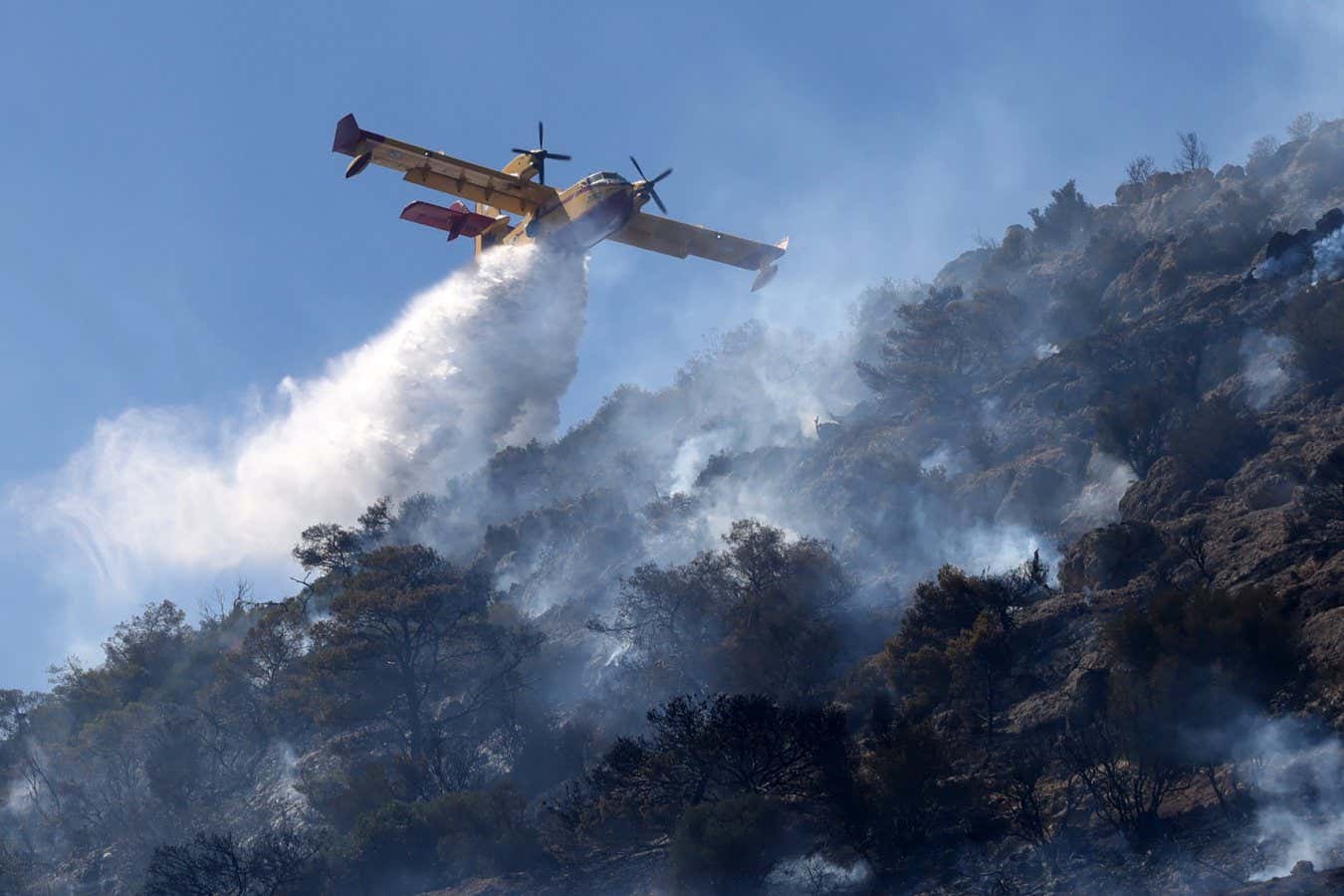We now have the ability to rapidly assess the death toll of climate change after extreme heat – a first-of-its-kind analysis has shown that it nearly tripled the death toll from the most recent European heatwave
By Alec Luhn
9 July 2025
A firefighting plane dropping water over a wildfire near Athens, Greece
Costas Baltas/Anadolu via Getty Images
An intense heatwave in June and July killed 2300 people across London and 11 other European cities, a death toll that was nearly tripled by climate change. While it can take months to determine the impact of climate change on heat deaths, scientists have now developed a method to do this quickly.
Read more
Extreme heat is now making cities unlivable. How can we survive it?
A “heat dome” of high atmospheric pressure brought extreme heat to western and central Europe in late June, with temperatures reaching nearly 35˚C in London, 40˚C in Paris and 46˚C in parts of Spain and Portugal. Wildfires blazed across the Mediterranean, nuclear reactors were shut down in Switzerland and France, and Italian regions banned outdoor labour during the hottest parts of the day after a construction worker died.
Advertisement
Researchers at the World Weather Attribution network used weather data to estimate how intense the heatwave would have been without climate change, then compared this with what actually happened. They combined their rapid attribution finding with research by at team at the London School of Hygiene & Tropical Medicine that has graphed the relationship between daily temperature and excess deaths in European cities. The researchers applied this curve to real-world temperatures and those calculated for a non-warming world to find the death toll of climate change during this heatwave.
They estimated that 2300 people died from heat between 23 June and 2 July in Athens, Barcelona, Budapest, Frankfurt, Lisbon, London, Madrid, Milan, Paris, Rome, Sassari, Italy, and Zagreb, Croatia. The analysis showed that the heatwave would have killed 700 people even in a cooler world. But because climate change amplified temperatures by up to 4˚C, an additional 1500 people died. Heat is the deadliest type of extreme weather, but it is a silent killer that aggravates existing illnesses and often isn’t recorded on death certificates.
Read more
How climate change has pushed our oceans to the brink of catastrophe
